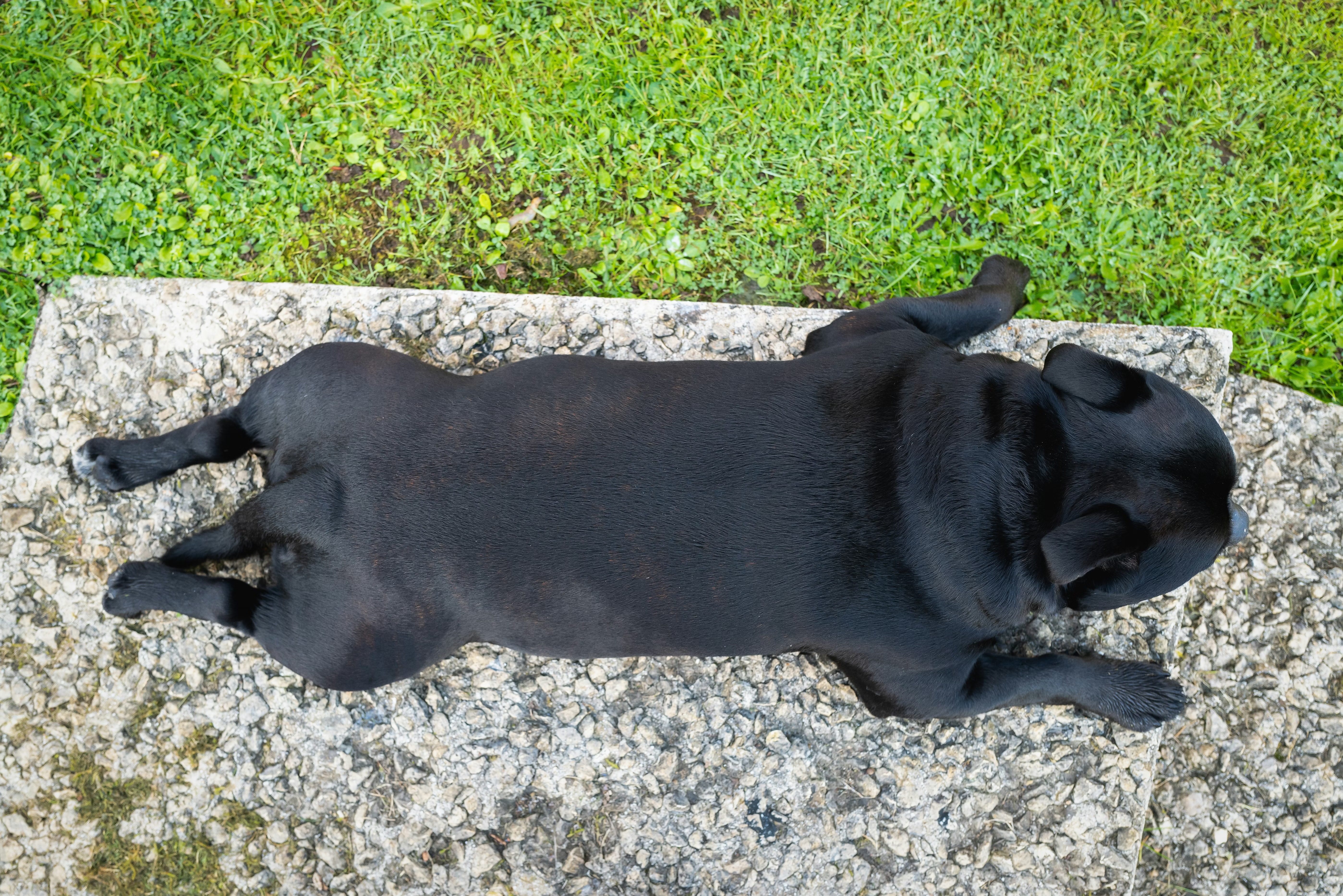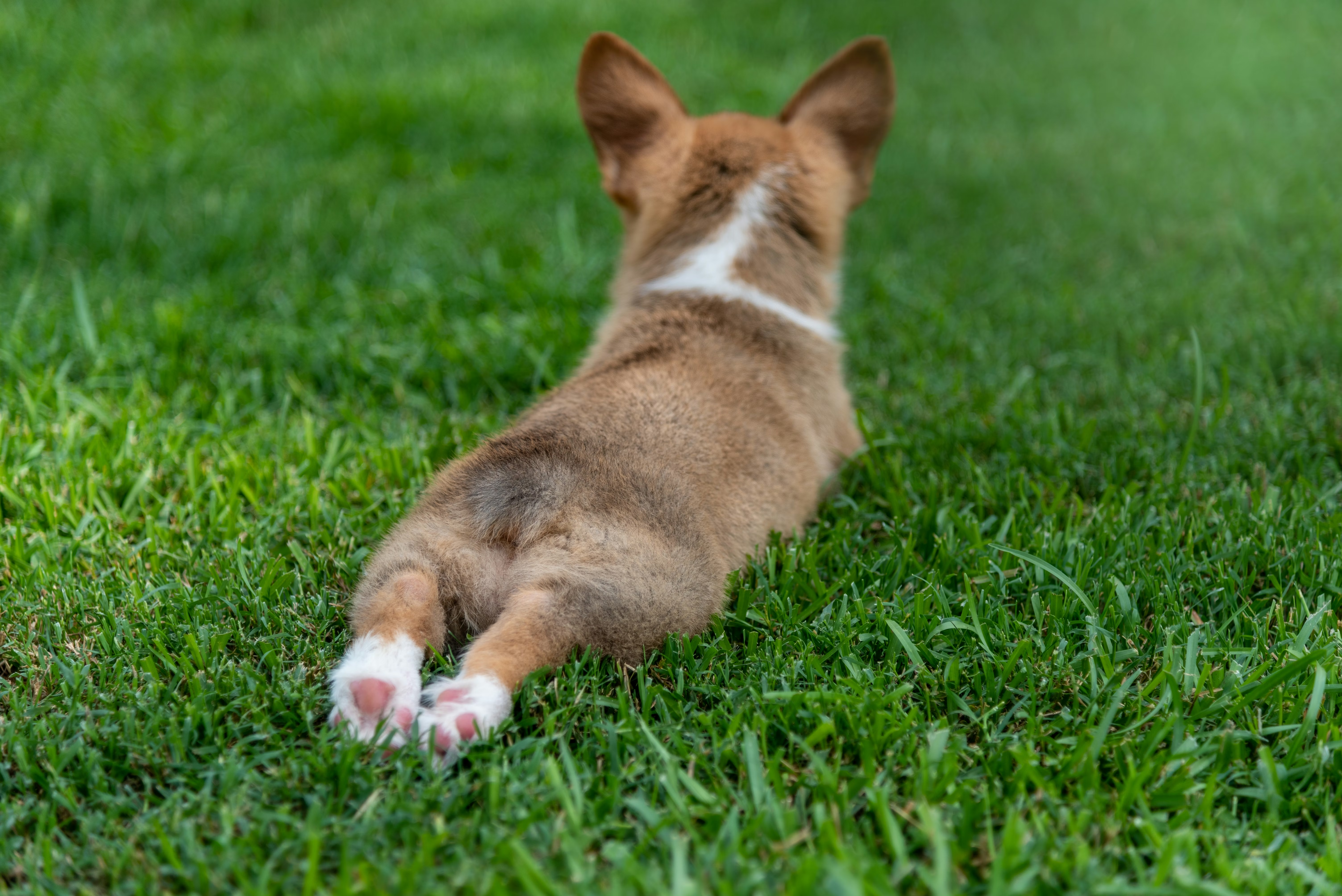Have you ever noticed your dog stretching out flat on their belly, with their back legs splayed behind them? That adorable pose is called "splooting." Some dogs love resting in that position, while others never try it. To understand why, let’s break down the reasons dogs might sploot and how genetics play a role.
What is splooting?
Splooting is a playful term describing dogs lying on their belly with their hind legs extended straight out behind them. While it’s not a technical term, splooting is widely recognized among pet parents and veterinary professionals (and anyone who loves looking at cute dog photos on the internet).
This position is often associated with relaxation and can be a sign of overall comfort and happiness. However, there are instances when splooting could be a cause for concern. Knowing how to spot the difference between the two states is important.

Why do dogs sploot?
Dogs sploot for a variety of reasons, and most of them are completely normal. These include:
- Cooling off: Splooting allows dogs to maximize contact between their belly and a cooler surface. For this reason, you may see this behavior more in warmer months or after exercise.
- Stretching: Much like humans stretch to relieve tension, dogs may sploot to stretch their hip and spine. Puppies, in particular, are known to sploot frequently because their joints and muscles are more pliable.
- Comfort: This position is simply comfortable for some dogs, especially short-legged dogs with long bodies.
Dog breeds known for splooting
While any dog can sploot, it’s common in specific breeds. Breeds that often sploot include:

Is splooting always a good thing?
Splooting is often harmless and adorable, but there are times when it can be a sign of an underlying issue. Look for the following warning signs.
- Your dog suddenly starts splooting more frequently: A change in behavior could indicate joint pain or stiffness.
- Splooting is accompanied by limping or difficulty standing: This may signal issues with the hips, knees, or spine.
- Your dog seems reluctant to move out of the position: Prolonged splooting or stiffness afterward could indicate discomfort or joint problems.
Conditions like hip dysplasia, arthritis, or injury can sometimes make splooting more frequent or uncomfortable for dogs. When in doubt, consult with your veterinary team. They can help determine whether splooting is normal or a sign of a larger issue that needs medical attention.
How genetics play a role
Wisdom Panel’s first-of-its-kind Behaviors feature identified links between a dog’s genetics and specific behaviors. Using our database of over 4.5 million pets, feedback from our pet parent community, and 1.5 million veterinary records, our Premium dog DNA test decodes fifteen behaviors, including their likelihood to sploot. So, if you catch your pup napping in this position, it just might be in their genes!
Final thoughts
Splooting is a charming and often normal behavior for dogs. By paying attention to when and why your dog sploots, you can better understand their needs and help them stay happy and healthy.














